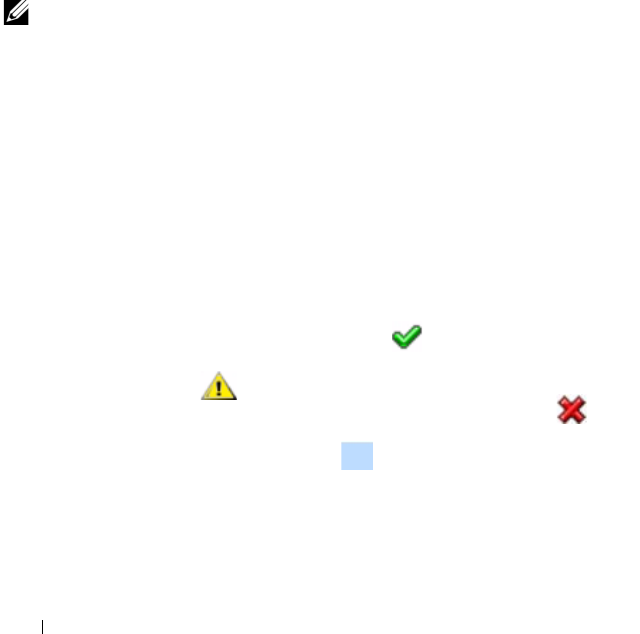Users Guide
Table Of Contents
- Introduction
- Setup and Administration
- Security Management
- Assigning User Privileges
- Disabling Guest and Anonymous Accounts in Supported Windows Operating Systems
- Configuring the SNMP Agent
- Configuring the SNMP Agent for Systems Running Supported Windows Operating Systems
- Configuring the SNMP Agent on Systems Running Supported Red Hat Enterprise Linux
- Configuring the SNMP Agent on Systems Running Supported SUSE Linux Enterprise Server
- Configuring the SNMP Agent on Systems Running Supported VMware ESX 4.X Operating Systems to Proxy VMware MIBs
- Configuring the SNMP Agent on Systems Running Supported VMware ESXi 4.X Operating Systems
- Firewall Configuration on Systems Running Supported Red Hat Enterprise Linux Operating Systems and SUSE Linux Enterprise Server
- Using Server Administrator
- Server Administrator Services
- Working With Remote Access Controller
- Overview
- Viewing Basic Information
- Configuring the Remote Access Device to use a LAN Connection
- Configuring the Remote Access Device to use a Serial Port Connection
- Configuring the Remote Access Device to use a Serial Over LAN Connection
- Additional Configuration for iDRAC
- Configuring Remote Access Device Users
- Setting Platform Event Filter Alerts
- Server Administrator Logs
- Setting Alert Actions
- Setting Alert Actions for Systems Running Supported Red Hat Enterprise Linux and SUSE Linux Enterprise Server Operating Systems
- Setting Alert Actions in Microsoft Windows Server 2003 and Windows Server 2008
- Setting Alert Action Execute Application in Windows Server 2008
- BMC/iDRAC Platform Events Filter Alert Messages
- Understanding Service Names
- Troubleshooting
- Frequently Asked Questions
- Index

72 Server Administrator Services
•Memory
•Network
•Ports
• Power Management
• Power Supplies
•Processors
• Remote Access
• Removable Flash Media
•Slots
•Temperatures
•Voltages
NOTE: Hardware performance is supported only on Dell xx0x and above systems.
Power supplies is not available on Dell PowerEdge 1900 system.
Power management is supported on limited Dell xx0x and above systems.
The system/server module may contain one main system chassis or several
chassis. The main system chassis/main system contains the essential
components of a system. The Main System Chassis/Main System object
action window has the following tab: Properties.
Properties
Subtabs: Health | Information | System Components (FRU)| Front Panel
Under the Properties tab, you can:
• View the health or status of hardware components and sensors. Each listed
component has a "System/Server Module Component Status Indicators"
icon next to its name. A green check mark ( ) indicates that a
component is healthy (normal). A yellow triangle containing an
exclamation point ( ) indicates that a component has a warning
(noncritical) condition and requires prompt attention. A red X ( )
indicates a component has a failure (critical) condition and requires
immediate attention. A blank space ( ) indicates that a component's
health status is unknown. The available monitored components include:
– Batteries
–Fans
book.book Page 72 Tuesday, July 6, 2010 12:01 PM










